

Guidelines for submitting articles to Santa Rosalia Today
Hello, and thank you for choosing Santa Rosalia.Today to publicise your organisation’s info or event.
Santa Rosalia Today is a website set up by Murcia Today specifically for residents of the urbanisation in Southwest Murcia, providing news and information on what’s happening in the local area, which is the largest English-speaking expat area in the Region of Murcia.
When submitting text to be included on Santa Rosalia Today, please abide by the following guidelines so we can upload your article as swiftly as possible:
Send an email to editor@spaintodayonline.com or contact@murciatoday.com
Attach the information in a Word Document or Google Doc
Include all relevant points, including:
Who is the organisation running the event?
Where is it happening?
When?
How much does it cost?
Is it necessary to book beforehand, or can people just show up on the day?
…but try not to exceed 300 words
Also attach a photo to illustrate your article, no more than 100kb

Murcia The Veronicas Market, a treasure trove of scents and colours
Where to go in Murcia, follow the trail to real saffron and gastronomic goodies.
Indoor markets are a murcian tradition , fresh food and produce being of vital importance to Spanish housewives,  who will ruthlessly maul through the produce and complain vociferously if the quality is low or the price high.
who will ruthlessly maul through the produce and complain vociferously if the quality is low or the price high.
Markets of any type are a joy to visit, and the permanent indoor markets in cities such as Murcia are vibrant, noisy and colourful , stuffed full of gourmet goodies.
The indoor market in Barcelona is a major tourist attraction, and whilst the market in Murcia isnt on quite such an 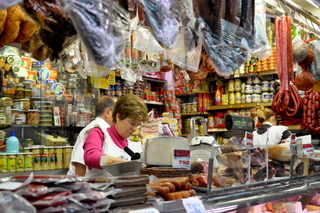
The Veronicas marketplace in Murcia was built between 1914 and 1917, and has a real modernist air about it. It stands out driving into the centre of the city from the main Autovia, on the left hand side close to the Palacio Almudi. , and there is an underground car park right next to it. The car park is always an excellent alternative to know about, especially when the Glorieta carpark( opposite the Town Hall) is full up, and can easily be accessed by turning around just past the gardens of Malecon in front of the modern suspension bridge where there is a mini roundabout and traffic light filter enabling cars to cross the central reservation.
 Many of the traders who have stalls in the market have been there since the 1914 market was built, and others say their families were trading from the previous market location for many years before that.
Many of the traders who have stalls in the market have been there since the 1914 market was built, and others say their families were trading from the previous market location for many years before that.
One of the vendors, Puri Canovas, who has a tiny little booth absolutely packed to the ceiling with pungent spices and herbs, showed us the photograph of her grandfather as a child, working on the families saffron farm in Albacete.
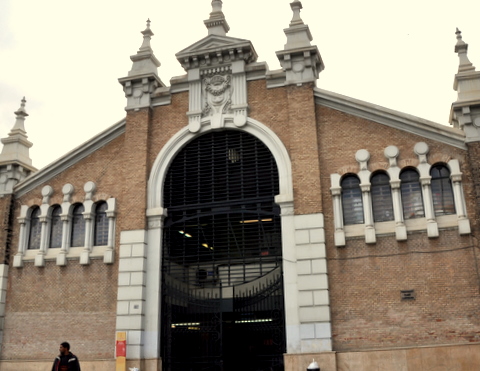
Saffron has an extraordinary flavour and is widely used in Mediterranean and arab cuisine where both its flavour and colour are highly prized.
It comes from a variety of purple crocus flower, the spice being the stamen, each flower yielding just three stigmas, which lose three quarters of their weight once they dry.
Total world production of Saffron is only 440,000 pounds in weight, a tiny quantity, yet representing many millions of flowers.
The production is incredibly labour intensive as everything has to be done by hand.
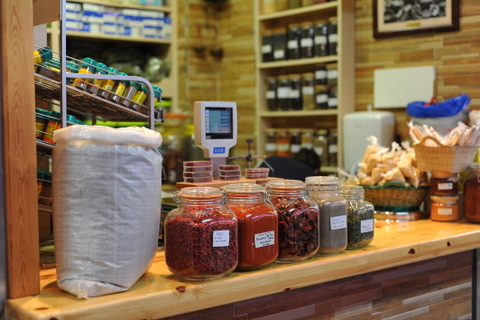 Puri explained that the saffron has to be harvested early in the morning, before the flowers open, on the first day on which they bloom, the precise timing of which means that the village has to turn out in force on the morning the flowers are ready.
Puri explained that the saffron has to be harvested early in the morning, before the flowers open, on the first day on which they bloom, the precise timing of which means that the village has to turn out in force on the morning the flowers are ready.
The flowers are picked whole, then the stamens separated by hand before being lightly dried over charcoal embers, with great care being taken to ensure they are not damaged.
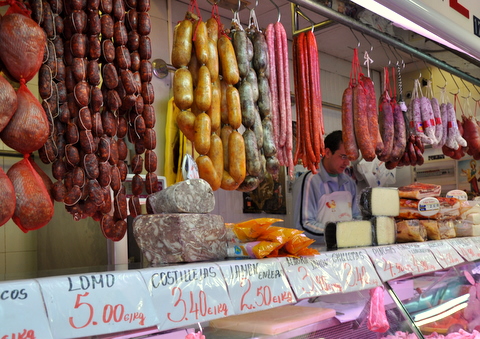
Astonishingly labour intensive.
Be careful where you buy it, as sometimes other strains are sold as saffron, but true saffron will always be intact, the stamen visibly what it is.
Puri said with a big grin that she can absolutely guarantee the authenticity of what she sells.
As well as being the real thing, this is considerably cheaper than youll find it anywhere else and makes an absolutely wonderful souvenir to take back home, being very easy to pack!
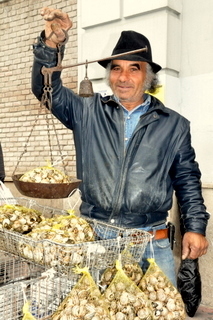
An odd little fact by the way, aged saffron is used to make Vermouth due to the flavour it creates as it ages.
Bet you didnt know that !
Nowadays a lot of saffron production is carried out in India and Iran, but youll still find Spanish production centres in Castilla La Mancha.
Apart from the wonderful spices, the market is crammed with fish, meats, the much beloved local murcian embutidos, the sausages flavoured with paprika, aniseed and nutmeg, as well as dried hams and fat bacon, with dried fish hanging from the rooves, strapped flat with bamboo supports.
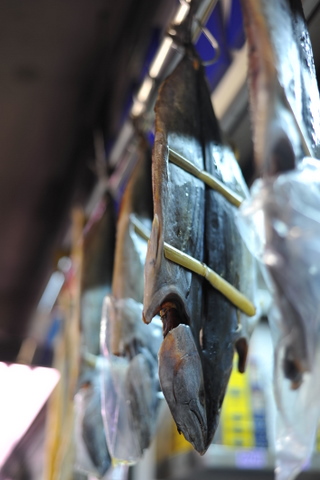 There was even a local man selling freshly harvested snails, the essential ingredient for Rabbit Paella, a murcian staple in bygone days.
There was even a local man selling freshly harvested snails, the essential ingredient for Rabbit Paella, a murcian staple in bygone days.
The odours of fresh baked bread from wood-fired ovens and coffee fill the air, and upstairs mountains of fresh murcian beans jostle for space with the mis-shapen murcian tomatoes, packed with flavour and colour, and fresh lime green artichokes or local asparagus.
Youll find it hard to beat the quality of locally grown vegetables from the orchards nearby; Murcia is known throughout the country as the vegetable garden of Spain, traditionally an agricultural area of great importance, irrigation installed by the arabs, allied with a temperate climate, creating perfect growing conditions.
Have a careful look in the marketplace- upstairs we found a stall just selling woodland mushrooms, and tucked amongst the oranges were sundried tomatoes from local farms, fresh herbs and some wonderful dried beans 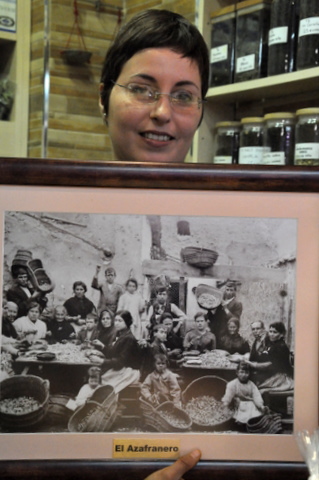
If the sight of all that wonderful food sets the juices flowing, there are little booths selling coffee and tapas, or if you fancy a taste of another murcian tradition, follow the road through to Plaza de las Flores, and discover another of murcias culinary treats, the Pastel de carne, the much-beloved murcian meat pie.
Click for pastel de carne.
The Veronicas Market is open until lunchtime every day except Sunday.
Click here for map, Veronicas Market.




































